
Although pasta was first recognized in Italy, history shows that it probably originated in Asia from their noodles.
Wherever it came from, it has spread across the globe and has become a staple in many homes and restaurants.
It’s hard to believe that such a delicious, versatile foodstuff is made from just two simple ingredients – flour and water or egg. Of course, it’s usually served with a delicious sauce.
While not exactly a healthy food, you can include moderate amounts of pasta in the diet provided the person also consumes good amounts of vegetables, fruit, and protein.
In terms of health, the wholewheat version is better, although it’s not traditional. Wholewheat pasta needs a slightly longer cooking time and is easier to undercook than traditional white pasta.
Pasta made from refined flour contains less fiber and more calories, and you’ll often need a bigger serving to fill you up.
Italians will tell you that the correct way to cook pasta is “al dente,” which means that it’s cooked enough that it has softened but still has a slight “bite” in the middle.
Most people in the US prefer it this way too, although some like it a little softer. While there is no coming back from overcooked pasta, we can give you a few tips on how to fix undercooked pasta.
Al dente
The term al dente means that the pasta is cooked but is still a little firm in the center.
It’s best cooked to this point because usually, once it has been mixed with a hot sauce, it will continue to cook a little more anyway.
Cooking your pasta until it is soft before adding a sauce will result in overcooked pasta.
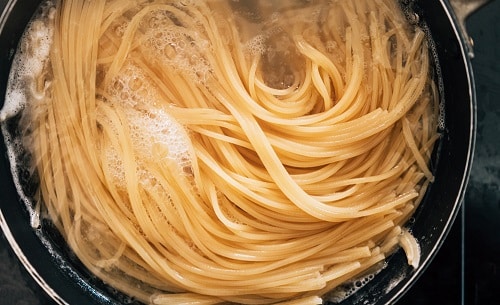
Correct cooking
Italians recommend using the biggest pot you have for cooking pasta to prevent overcrowding of the pasta and pieces of it sticking together.
Fill your saucepan three-quarters full of water and add enough salt to make it “as salty as the Mediterranean,” as one chef likes to put it!
Bring the water to a very fast boil before adding the pasta. Boil the pasta for a few minutes with the lid off until it’s al dente. Test for doneness by putting a piece between your teeth.
It should still have a slight “bite” to it. When it reaches this point, remove the pot from the heat immediately and drain the pasta at once, using a colander.
Get into the habit of always reserving a little of this water. You’ll see why just now. Please do not leave the pasta in the water, or it will continue to cook and become too soft.
How To fix Undercooked Pasta?
Undercooked pasta is difficult to chew and swallow. It doesn’t taste good and can ruin your entire dish. It is a real problem but can be fixed.
If you haven’t added the sauce yet, your undercooked pasta can become perfect. The real test is when you have added the sauce. So, here are the tips you can use to cook pasta to perfection.
1. Remember to use a large pot for boiling
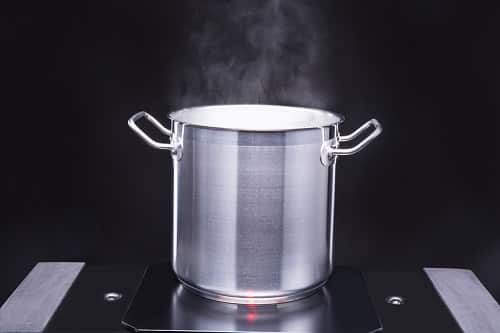
As we’ve said before, use a big pot even if you only cook a small amount of pasta. This is often neglected.
If the pot is too small, the pasta on top is left sticking out of the water and will not boil properly.
If your pot is too small, there will be too little water in it, and the water will become starchy, causing the pasta to stick together.
Make it your number one priority to use an appropriately sized pot.
2. Add salt
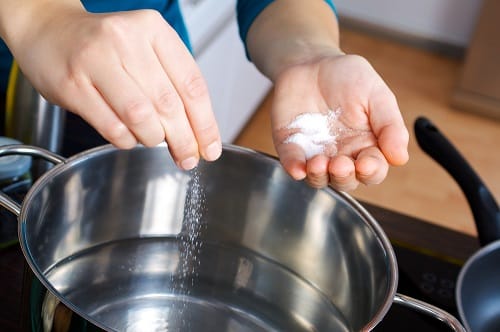
Adding some salt to the boiling water is necessary to give the pasta enough flavor. Pasta dough is not made with added salt.
Adding salt will also prevent the pasta from releasing too much of its starch and becoming sticky.
We recommend using between a teaspoon and a tablespoon of salt, depending on the size of your pot.
3. Boiling time
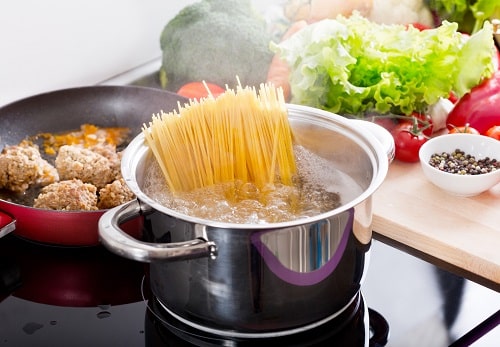
There is no standard time for boiling the pasta. It depends on the shape, how much you add to the pot, and whether you’re using fresh or dried pasta.
Cooking pasta to perfection comes from experience and checking on the state of pasta.
In general, pasta only takes a few minutes to cook. Test every few minutes to prevent it from overcooking.
If it’s undercooked at this point, your job is easy… allow it to boil for another minute or two.
4. Cook in the sauce
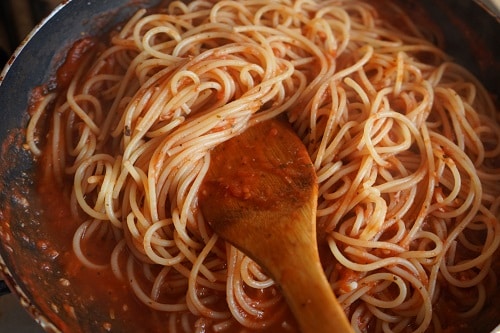
If you’ve already added the sauce and then discover that your pasta is undercooked, this isn’t a problem. Continue to cook the pasta and the sauce together for a few minutes.
Stir the mixture gently to prevent it from sticking on the bottom of the pot but be careful not to break the pasta up.
Add a little extra stock or some of the reserved pasta cooking water if the sauce is too thick. Remember that the pasta is going to absorb some of the moisture as it finishes cooking.
Believe it or not, the pasta will be well flavored as it will absorb flavors from the sauce as it cooks.
5. Use the salty water from before
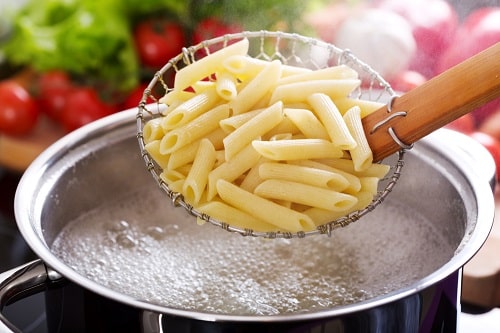
An alternative method to cook your pasta a little more is to use the salty cooking water before.
Add some of the reserved water with a knob of butter to the pasta. Cook it for a couple more minutes until done, then drain off any excess liquid.
While it’s not difficult to cook pasta, cooking it to perfection requires practice and patience.
Undercooked or overcooked pasta can ruin a dish, so if your pasta is undercooked, use our tips to fix it. Bon Appetit!